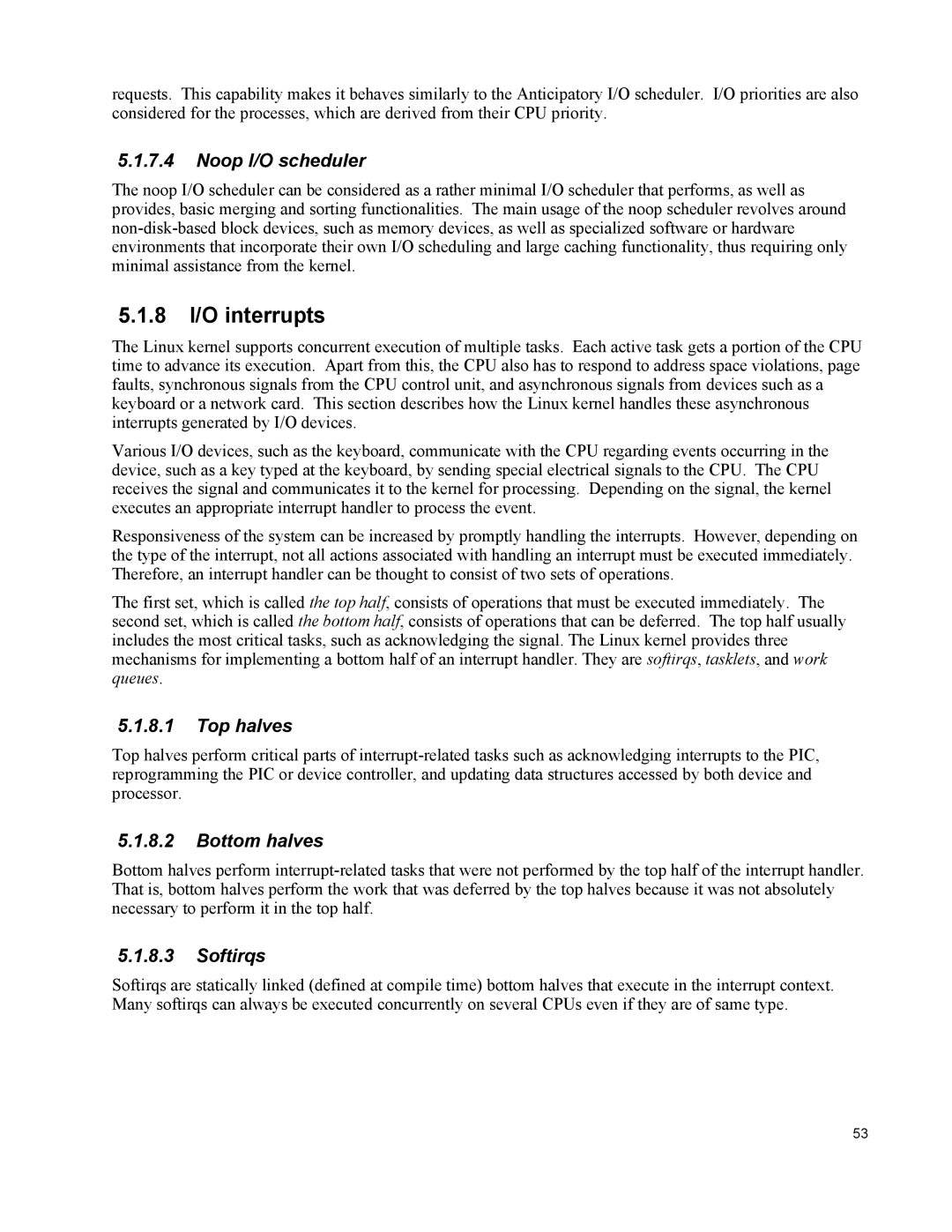requests. This capability makes it behaves similarly to the Anticipatory I/O scheduler. I/O priorities are also considered for the processes, which are derived from their CPU priority.
5.1.7.4Noop I/O scheduler
The noop I/O scheduler can be considered as a rather minimal I/O scheduler that performs, as well as provides, basic merging and sorting functionalities. The main usage of the noop scheduler revolves around
5.1.8I/O interrupts
The Linux kernel supports concurrent execution of multiple tasks. Each active task gets a portion of the CPU time to advance its execution. Apart from this, the CPU also has to respond to address space violations, page faults, synchronous signals from the CPU control unit, and asynchronous signals from devices such as a keyboard or a network card. This section describes how the Linux kernel handles these asynchronous interrupts generated by I/O devices.
Various I/O devices, such as the keyboard, communicate with the CPU regarding events occurring in the device, such as a key typed at the keyboard, by sending special electrical signals to the CPU. The CPU receives the signal and communicates it to the kernel for processing. Depending on the signal, the kernel executes an appropriate interrupt handler to process the event.
Responsiveness of the system can be increased by promptly handling the interrupts. However, depending on the type of the interrupt, not all actions associated with handling an interrupt must be executed immediately. Therefore, an interrupt handler can be thought to consist of two sets of operations.
The first set, which is called the top half, consists of operations that must be executed immediately. The second set, which is called the bottom half, consists of operations that can be deferred. The top half usually includes the most critical tasks, such as acknowledging the signal. The Linux kernel provides three mechanisms for implementing a bottom half of an interrupt handler. They are softirqs, tasklets, and work queues.
5.1.8.1Top halves
Top halves perform critical parts of
5.1.8.2Bottom halves
Bottom halves perform
5.1.8.3Softirqs
Softirqs are statically linked (defined at compile time) bottom halves that execute in the interrupt context. Many softirqs can always be executed concurrently on several CPUs even if they are of same type.
53
